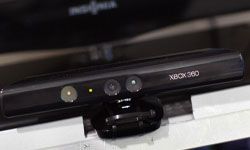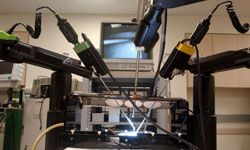With the release of the Kinect for Xbox 360 (the first hands-free game controller) in November 2010, Microsoft was poised to completely transform the gaming industry. The Wii's motion-sensing controller had opened the door to the future of gaming when it was released; Kinect blew that door off its hinges. Gamers everywhere were thinking about the full-immersion possibilities of gaming's next step.
But the real revolution stirred by the Kinect had nothing to do with gaming. Hackers immediately saw potential in the device far beyond its intended use as a gaming accessory. On Kinect's release date, Adafruit Industries, an open-source hardware development group, posted a $3,000 bounty for the first successful, open-source driver to make use of Kinect's motion-sensing technology outside of its Xbox 360 application [source: Adafruit]. The bounty was claimed by a hacker who didn't even own an Xbox and managed to create a Linux-based camera driver for the Kinect in about three hours. The contest is over, but independent developers continue to find new uses for the Kinect every day, some of which are pretty darned cool. Join the fun as we scope out five Kinect hacks that transcend the device's gaming roots.
Advertisement
To see the hack that's on every world-domination-plotting villain's wish list, you must continue to the next page. Muahahahahahaha!



